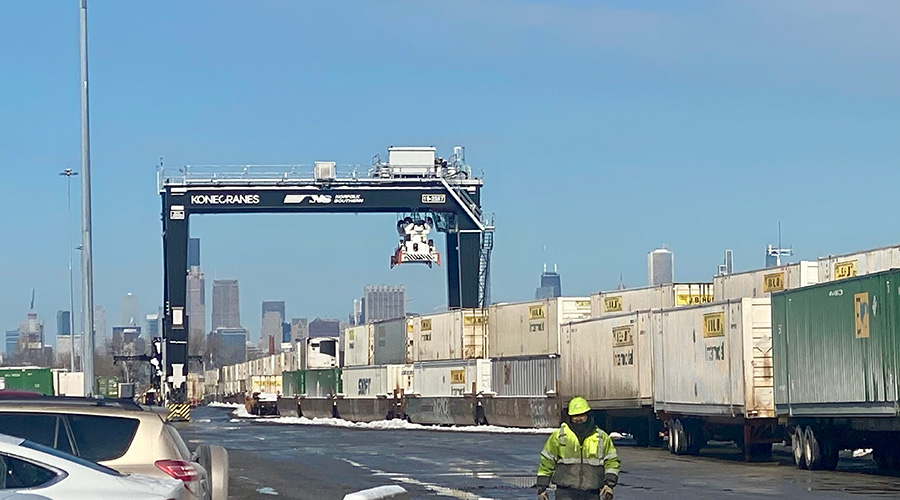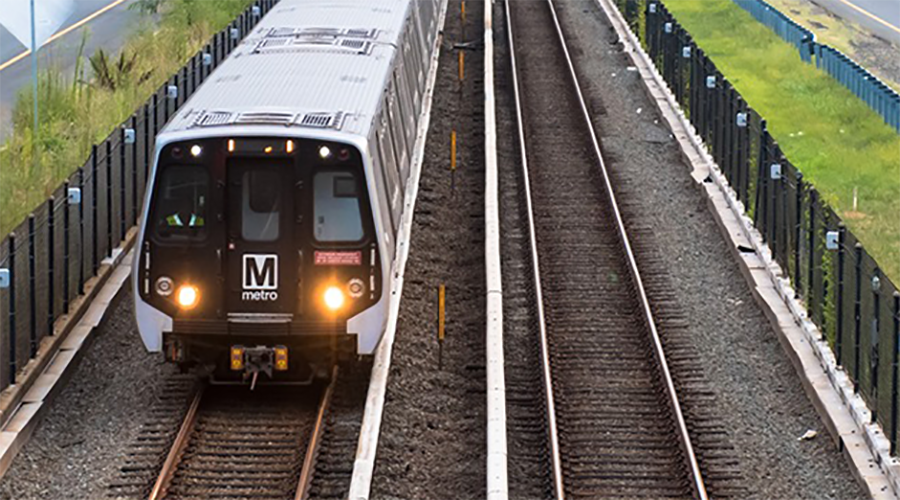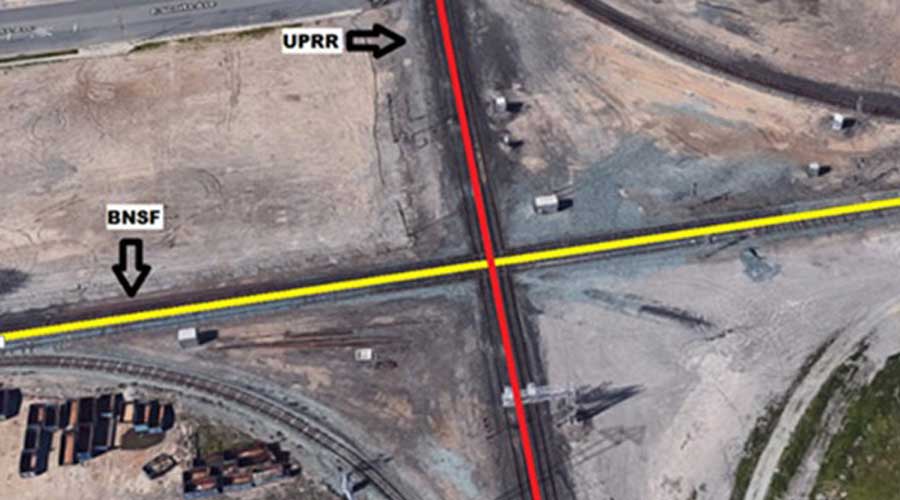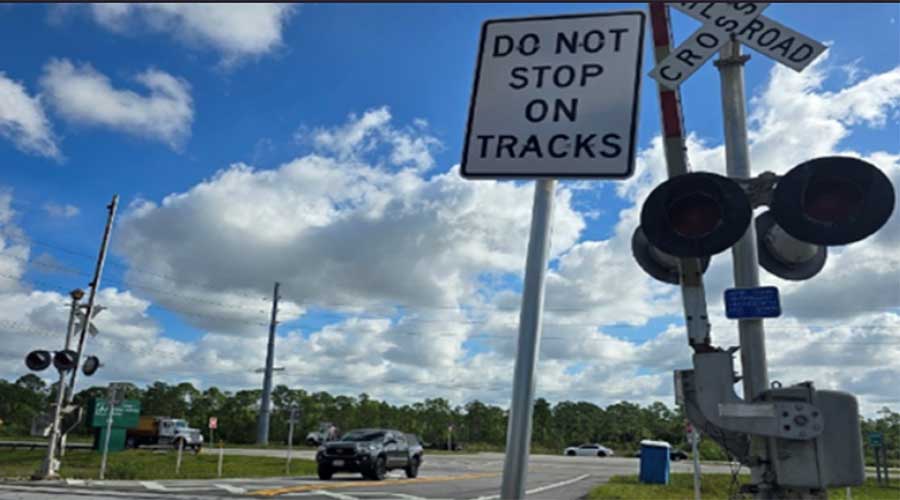Newsletter Sign Up
Stay updated on news, articles and information for the rail industry
Stay updated on news, articles and information for the rail industry
RAIL EMPLOYMENT & NOTICES
Rail News Home
Financials
Rail News: Financials

7/21/2011
Rail News: Financials
Severe floods don't drown UP in the red

advertisement
Despite “massive” flooding in the Midwest, which increased expenses, decreased earnings and hindered productivity, Union Pacific Corp. registered record-setting financial performance in the second quarter, senior executives said this morning during an earnings teleconference and webcast.
Operating revenue soared 16 percent to a record $4.9 billion, freight revenue climbed 16 percent to a record $4.6 billion, diluted earnings per share (EPS) increased 10 percent to a quarterly best $1.59 and operating income rose 9 percent to a record $1.4 billion compared with second-quarter 2010 figures. Analysts surveyed by FactSet had expected earnings of $1.58 per share and total revenue of $4.74 billion. In addition, net income increased 10 percent to $785 million and volume rose 3 percent to 2.2 million units.
Floods caused by record snowmelts in the Dakotas, Minnesota, Missouri and Nebraska, and June rainfalls in the region that skyrocketed 200 percent to 300 percent above normal levels reduced UP’s EPS by four cents and increased operating expenses by $14 million.
“We generated record second-quarter operating income and cash from operations despite the impact of severe flooding in the Midwest,” said UP Chairman, President and Chief Executive Officer Jim Young. “We saw the benefits of our diverse franchise, with volume growth in five of our six commodity groups.”
Strong agricultural products and chemical business drove volume and revenue growth. Ag products revenue jumped 22 percent to $849 million and volume rose 11 percent to 237,000 units primarily because of increased demand for export whole grains and continued ethanol business growth, said Executive Vice President of Marketing and Sales Jack Koraleski. Chemicals revenue climbed 19 percent to $703 million and volume increased 11 percent to 233,000 units due to growth in crude oil traffic, strong demand for fertilizers and continued strength in industrial chemicals, he said.
Automotive revenue rose 14 percent to $381 million and volume increased 4 percent to 165,000 units, energy revenue climbed 14 percent to $950 million and volume inched up 2 percent to 496,000 units — helped by new coal business in Wisconsin and Colorado/Utah region export coal growth — and industrial products revenue jumped 16 percent to $803 million and volume increased 4 percent to 297,000 units.
Although intermodal revenue rose 13 percent to $909 million, volume declined 1 percent to 819,000 units primarily due to the loss of an international business contract, said Koraleski, adding that soft import volumes in May and June also were a factor.
The major factor in UP’s higher second-quarter operating ratio was fuel costs. The ratio rose 1.9 points to 71.3, but fuel expenses — which soared 49 percent to $904 million — added 2 points to the operating metric, said EVP and Chief Financial Officer Rob Knight. Fuel expenses also decreased EPS by two cents, he said.
In addition, fuel costs accounted for half of a significant increase in operating expenses, which climbed 19 percent to $3.5 billion. The average price per gallon of diesel jumped 44 percent to $3.29, said Knight. Another expense driver: compensation and benefits costs, which rose 11 percent to $1.2 billion. Inflation, volume-related costs, worker training, flood-related impacts and headcount — which increased 6 percent year over year to 44,971 — contributed to those higher expenses, said Knight.
Despite the recent floods and softer demand in several sectors, UP “shares the general view” that there will be stronger growth in the year’s second half, senior execs said.
— Jeff Stagl
Operating revenue soared 16 percent to a record $4.9 billion, freight revenue climbed 16 percent to a record $4.6 billion, diluted earnings per share (EPS) increased 10 percent to a quarterly best $1.59 and operating income rose 9 percent to a record $1.4 billion compared with second-quarter 2010 figures. Analysts surveyed by FactSet had expected earnings of $1.58 per share and total revenue of $4.74 billion. In addition, net income increased 10 percent to $785 million and volume rose 3 percent to 2.2 million units.
Floods caused by record snowmelts in the Dakotas, Minnesota, Missouri and Nebraska, and June rainfalls in the region that skyrocketed 200 percent to 300 percent above normal levels reduced UP’s EPS by four cents and increased operating expenses by $14 million.
“We generated record second-quarter operating income and cash from operations despite the impact of severe flooding in the Midwest,” said UP Chairman, President and Chief Executive Officer Jim Young. “We saw the benefits of our diverse franchise, with volume growth in five of our six commodity groups.”
Strong agricultural products and chemical business drove volume and revenue growth. Ag products revenue jumped 22 percent to $849 million and volume rose 11 percent to 237,000 units primarily because of increased demand for export whole grains and continued ethanol business growth, said Executive Vice President of Marketing and Sales Jack Koraleski. Chemicals revenue climbed 19 percent to $703 million and volume increased 11 percent to 233,000 units due to growth in crude oil traffic, strong demand for fertilizers and continued strength in industrial chemicals, he said.
Automotive revenue rose 14 percent to $381 million and volume increased 4 percent to 165,000 units, energy revenue climbed 14 percent to $950 million and volume inched up 2 percent to 496,000 units — helped by new coal business in Wisconsin and Colorado/Utah region export coal growth — and industrial products revenue jumped 16 percent to $803 million and volume increased 4 percent to 297,000 units.
Although intermodal revenue rose 13 percent to $909 million, volume declined 1 percent to 819,000 units primarily due to the loss of an international business contract, said Koraleski, adding that soft import volumes in May and June also were a factor.
The major factor in UP’s higher second-quarter operating ratio was fuel costs. The ratio rose 1.9 points to 71.3, but fuel expenses — which soared 49 percent to $904 million — added 2 points to the operating metric, said EVP and Chief Financial Officer Rob Knight. Fuel expenses also decreased EPS by two cents, he said.
In addition, fuel costs accounted for half of a significant increase in operating expenses, which climbed 19 percent to $3.5 billion. The average price per gallon of diesel jumped 44 percent to $3.29, said Knight. Another expense driver: compensation and benefits costs, which rose 11 percent to $1.2 billion. Inflation, volume-related costs, worker training, flood-related impacts and headcount — which increased 6 percent year over year to 44,971 — contributed to those higher expenses, said Knight.
Despite the recent floods and softer demand in several sectors, UP “shares the general view” that there will be stronger growth in the year’s second half, senior execs said.
— Jeff Stagl


 2025 MOW Spending Report: Passenger-rail programs
2025 MOW Spending Report: Passenger-rail programs
 Gardner steps down as Amtrak CEO
Gardner steps down as Amtrak CEO
 Guest comment: Oliver Wyman’s David Hunt
Guest comment: Oliver Wyman’s David Hunt
 Women of Influence in Rail eBook
Women of Influence in Rail eBook
 railPrime
railPrime








